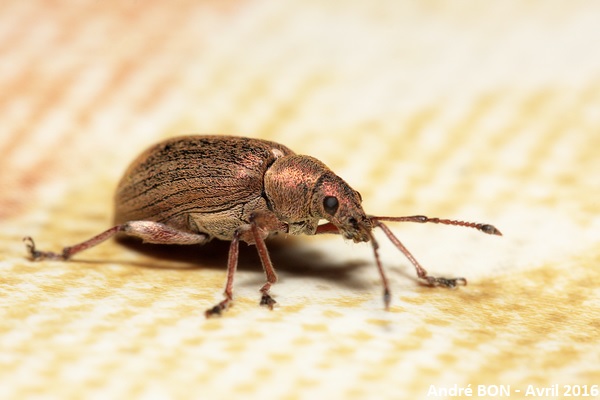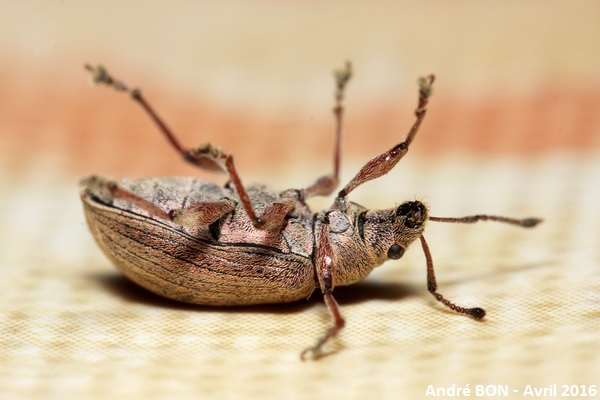

| Common Leaf Weevil (Phyllobius pyri (Linnaeus 1758)) |


|
|
Scientific name: Phyllobius pyri (Linnaeus 1758) Common name: Common Leaf Weevil French name: Phyllobe du poirier Order: Coleoptera Family: Curculionidae Wingspan : 4.5 to 7.5 mm. Biotope: Mainly in trees and bushes rather then among grasses. Woodland edges, orchards, parks and gardens. Geographic area: Palaearctic region as far as eastern Asia. Observation period : April to June. |
You can distinguish weevils of the Phyllobius genus compared to weevils of the Polydrusus genus from the shape of the scrobe (line where the antenna is inserted). It is rather straight, short and hardly visible on Phyllobius while it is curved and extends as far as below the eyes on Polydrusus. The Common Leaf Weevil is variable in colour, often copper coloured, sometimes greenish, ashy or yellowish grey. It turns to black with age by loosing scales. The elytra are rather lengthy and ridged, with straight edges. The scutellum is white. The eyes are protruding. The legs are strong and reddish brown to orange in colour. The femurs are toothed. Phyllobius vespertinus, which is very similar, shows a less elongated shape. Head and pronotum are still thinner than elytra but appear wider. |
| [To know more about the Common Leaf Weevil] [Next picture] [Top] |

|
The scrobe clearly indicates one member of the Phyllobius genus. The elongated shape, the copper colour, the white scutellum and the teeth of the femurs (better visible on the non-reduced picture) obviously lead to the Phyllobius pyri species. |
| [To know more about the Common Leaf Weevil] [Previous picture] [Top] |

|
Having brought this specimen inside the house to shoot pictures in better conditions before bringing it back to the place it was collected, I had the pleasure to be able to observe the underside. |